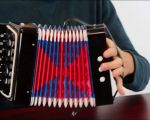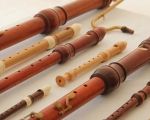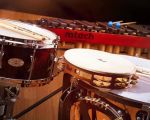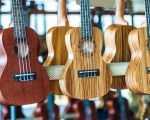Instruments Used in Klezmer Music: A Comprehensive Guide
Klezmer music is a deeply rooted cultural expression of Jewish tradition, often associated with joyful celebrations, weddings, and other festive events. Originating from Eastern European Jewish communities, klezmer music has evolved over centuries and incorporates a variety of instruments that give it its distinct sound. Whether you're attending a klezmer concert or simply curious about its unique elements, understanding the instruments that define klezmer music is a great place to start. In this article, I will explore the traditional and modern instruments commonly used in klezmer music, their roles, and how they contribute to its unique melodies.
1. The Clarinet: A Signature Sound of Klezmer
When it comes to klezmer music, the clarinet is undoubtedly one of the most iconic and recognizable instruments. Its versatility and wide range make it an essential part of any klezmer ensemble. The clarinet's ability to create both mournful, soulful melodies and energetic, rapid runs allows it to convey a wide spectrum of emotions that are central to klezmer music.
The clarinet’s deep, resonant tones evoke the emotional depth of klezmer, often carrying the melody in both slow and fast tempos. In traditional klezmer bands, the clarinet often takes center stage during solos, where its vibrato-heavy passages and ornamentation mirror the vocal styles of Jewish cantorial singing. Its role is vital in both the melancholic and joyous moments of klezmer performances.
2. The Violin: Bridging the Gap Between Folk and Classical
The violin is another key instrument in klezmer music. Much like the clarinet, the violin can play both soulful, slower passages and faster, more frenetic pieces. Historically, the violin was favored in Eastern European Jewish communities, where it was played at weddings and other celebrations. The violin’s sound, when played in the klezmer style, is filled with rich ornaments like slides, trills, and grace notes.
Violinists in klezmer music are highly skilled at improvising, adapting their playing style to match the emotional tone of the song. Whether playing the haunting melodies of a slow song or the lively, upbeat riffs in a fast-paced piece, the violin adds a layer of emotion and vibrancy to the music.
3. The Accordion: A Dance-Friendly Instrument
While it may not be as commonly associated with klezmer as the clarinet or violin, the accordion has become an integral part of the klezmer ensemble in modern times. Its rich, full sound and ability to accompany the melodies make it a perfect partner for the violin and clarinet. The accordion’s keyboard and bellows allow the musician to create dynamic shifts in volume and texture, giving it versatility in both fast and slow sections of a piece.
In klezmer bands, the accordion often plays a supportive role, providing rhythmic and harmonic structure while complementing the lead instruments. It is also used for improvisation, adding color and depth to the performance. The accordion's ability to maintain the flow of dance music is essential during lively klezmer dances like the "Freylekhs," a popular tune in Jewish celebrations.
4. The Trombone and Trumpet: Brass Adds Brightness
Brass instruments like the trombone and trumpet occasionally make an appearance in klezmer music, adding a distinct layer of brightness and power. These instruments, while not always featured in traditional klezmer bands, have gained popularity in more modern klezmer ensembles and have been used to infuse the music with an upbeat, energetic sound. The brass section typically provides additional color and volume, especially during festival or celebratory performances.
The trombone, with its bold, sliding notes, can create dramatic effects that heighten the intensity of the music, while the trumpet adds crisp, sharp melodies that can pierce through the other instruments. When combined with the strings and woodwinds, the brass section can elevate a klezmer performance, making it both exciting and emotionally impactful.
5. The Double Bass: Laying the Foundation
The double bass plays a crucial role in klezmer music by providing the rhythmic foundation and harmonic support for the ensemble. Though it may not often take the spotlight, its deep, resonant tones keep the rhythm grounded and serve as the backbone for the faster-paced sections of klezmer. The bass adds depth to the overall sound, ensuring that the music doesn’t feel too light or thin.
In klezmer bands, the double bass is often used to provide the syncopated rhythms that define the danceable quality of the genre. In slower, more reflective pieces, the bass offers a steady pulse, giving the music structure and helping the audience to engage with the melodies more intimately.
6. The Drums and Percussion: Driving the Rhythm
No klezmer ensemble is complete without percussion instruments to keep the rhythm lively and consistent. The drums, along with other percussion instruments like the cymbals, tambourine, and darbuka, provide the necessary beats to accompany the intricate melodies and harmonies of the other instruments. Percussionists in klezmer bands often focus on accentuating the syncopated rhythms and driving the pace of the music, particularly during faster dances like the "Khosidl."
The percussion section in klezmer music is responsible for maintaining energy and excitement, providing a solid foundation for the melodic instruments. In many klezmer performances, the drummer will also engage in playful interaction with the other musicians, adding spontaneous flourishes and fills to complement the ensemble’s overall sound.
Conclusion: The Harmonious Fusion of Instruments in Klezmer Music
Klezmer music is a beautiful and emotional genre that reflects the rich cultural heritage of Eastern European Jews. Its unique sound is shaped by the variety of instruments used in the ensemble, each bringing its own voice and character to the music. From the soulful tones of the clarinet to the rhythmic power of the percussion, each instrument plays a vital role in creating the unforgettable sound of klezmer.
By understanding the instruments used in klezmer music, we can gain a deeper appreciation for the cultural significance and musical beauty of this art form. Whether you’re attending a live performance or listening to a recording, the diverse range of instruments in a klezmer band ensures a captivating experience that reflects both joy and sorrow, celebration and reflection.








